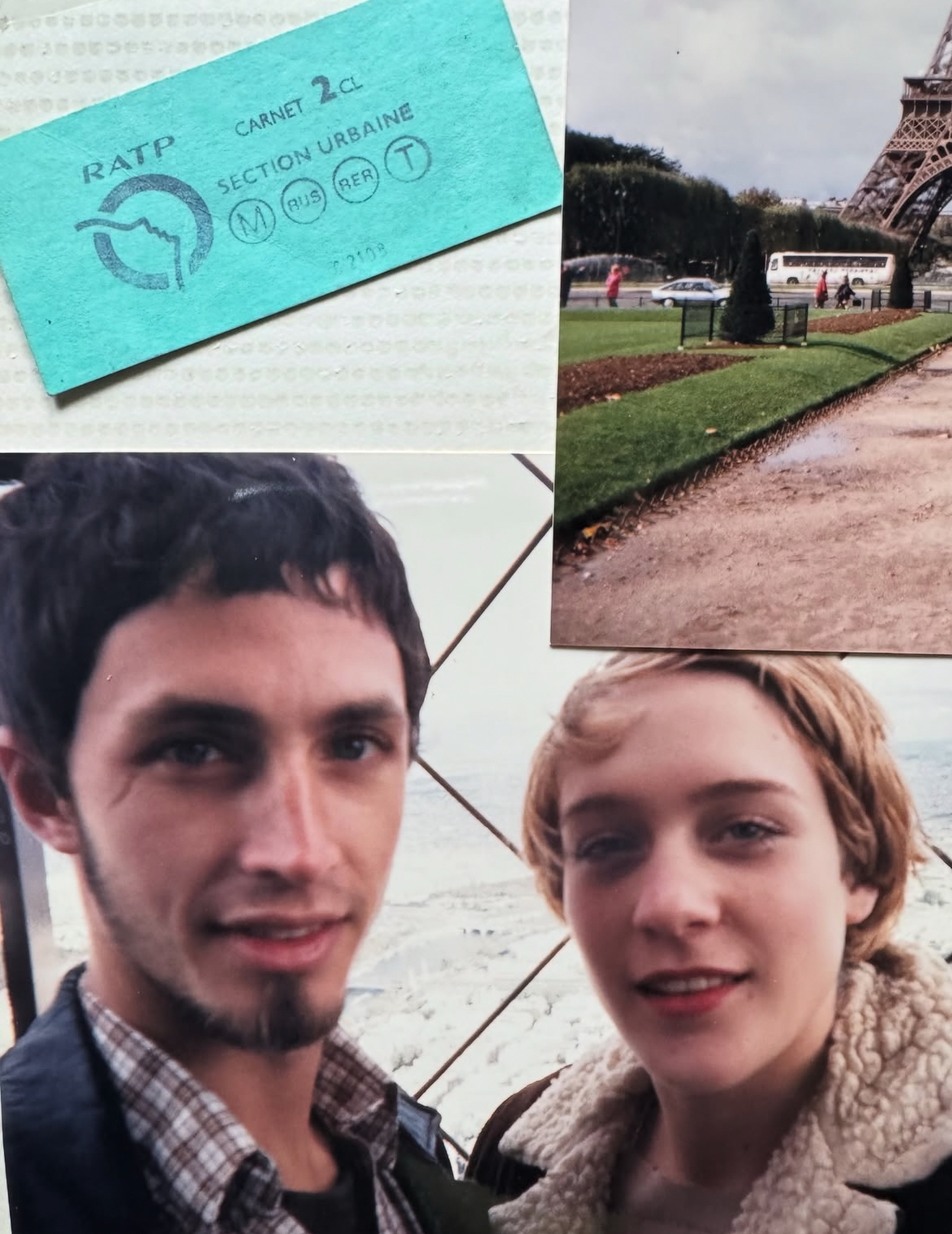EMILIA LAURA KUDELA reflects on Chloë Sevigny, ‘coolness’, and the relentless performance of identity.
In her latest Instagram post, Chloë Sevigny shared a series of film photographs from her first trip outside the continental U.S. She is twenty years old, puffy-cheeked, sporting a short bob that borders on a pixie cut, with the Eiffel Tower rising behind her. Everything about her – her poses, her squinted face – radiates casual authenticity. It manifests in the practicality of the extra sweater knotted loosely at her hips, not styled but slung there, as if she’d grown too warm. She is wholly present, unguarded. Nothing about her is stilted. She stands in opposition to jadedness. She isn’t contriving a pose or even a look but embodies candor and unstudied modishness in every frame. She makes no attempt to be cool. And in that, she is.
‘Coolness’ is a seemingly innate quality, something one cannot strive for, but just has. It is effortless. An anti-performance.
Come forth a paradox. We desire coolness, and so we try to be cool. We are inclined to imitate it, to reproduce its signs: the undone hair, the loose fit, maybe even the haircut. But the instant we try to obtain it, it slips through our fingers. Unfortunately, coolness evaporates quickly and at low temperatures; it curdles in the face of self-consciousness and calculation. It is both hyper-visible and invisible. We recognise it when we see it yet can’t quite name why or what it is – it only exists as something tacit.
What makes Sevigny’s candid photo compelling is not that she slapped on a grainy, film-like filter or that she dressed in some vaguely bohemian way, but that she is, in no way, curating herself or the photograph.
My Instagram page has been filled with ‘cool-girl’ gift guides full of Paul Frank wallets, funky tights, and CDs; ‘cool-girl’ Halloween costumes, pre-styled and pre-approved; ‘cool girl’ hairstyles; and even ‘cool girl’ beverages. Capitalism feeds on the scarcity of coolness, a metaphysical sensibility that is meant to transcend commodification. But what resists commodification is quickly mimicked, turned into raw material for the market.
Consumer culture seizes these moments of unmanufactured style and chicness, repackages them, and sells them back to us as consumable signs of coolness. Racks of ready-to-wear je ne sais quoi. You can be cool for the low price of 59 pounds and having to endure an itchy collar. It is kitsch. It is banal. (But I won’t lie – those Brandy Melville tanks and Urban Outfitters joggers coo my name too.)
I know I am not really saying anything new here, but the important bit is that we can all achieve ‘coolness.’ All we have to do is just stop fucking trying so hard. Fully embracing your instincts, initiating new dialogue with yourself. Carve your place in this world.
Of course, the oversaturated advice of East London creatives and Surrey girls alike resonates here, too: shop secondhand. The point is not merely to reject the churning beast of fast fashion but to slow down enough to ask: what do I actually want? Spend wisely and with intention. Talk to yourself. Talk to a pair of trousers.
According to a study from the Journal of Experimental Psychology surveying over 6,000 people across the world, the six core traits which make someone ‘cool’ are extroversion, hedonism, power, adventurousness, autonomy, and openness to experience (Warren et al. 2410). These traits converge on a single principle: agency in thought, movement and being. To be entirely receptive to the fervor and vivacity of the land you tread. Take the risks. Be radical. Drink more deeply from the joys.
At the same time as coolness is an exercise in self-ownership, it is equally one in self-liberation. Poet John Keats criticised the aesthetic sensibility and intellectual climate of his time with ‘negative capability’, but I think it reigns true in reference to what I propose, too. He describes it as “being in uncertainties, mysteries, doubts, without any irritable reaching after fact and reason.” Negative capability is about tolerating ambiguity in artistic pursuits and rejecting the impulse to resolve experience into philosophical or rational clarity. Prioritising the Romantic intensity of experience, earnestness, and faith over clinical explanation.
This is the discipline of effortlessness: unclenching, resisting the impulse to present, to posture, to signal – living with what is unresolved and hanging around your waist, loosely tied in a cotton knot.

